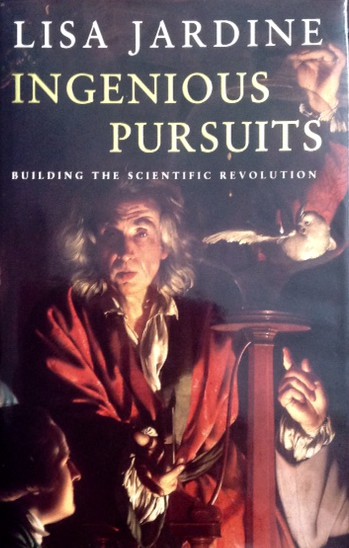Inspiring Older Readers
 posted on 15 May 2018
posted on 15 May 2018
Ingenious Pursuits by Lisa Jardine
Could there have be anyone better placed or more capable of writing a book that has as its core premise a challenge to the artificial division between the sciences and the arts? Lisa Jardine was an esteemed historian, Member of Council of the Royal Institution and the former Chair of the Human Fertilisation and Embryology Authority(HFEA) – and if that’s not enough, she was also the daughter of Jacob Bronowski who, perhaps more than any other public intellectual, embodied the interconnectedness of the arts and sciences.
When I was at secondary school in the late 1960s, the distinction between arts and sciences felt tangible and rigid – the choices of subjects we could make to take onto exam level seemed to be based on the notion that you would be interested in either one discipline or the other and never the twain would meet.
The idea that science had a social history and that scientists were often using their imagination and their creative capabilities was not something I was ever really made aware of. We only knew the names of scientists if they had their moniker attached to a law of some sort – Boyle’s Law, Ohm’s Law, Newton’s Laws etc. – but we were never given any context or understanding of how all these mysterious scientists worked. It was, sadly from my point of view, mainly reduced to maths of one kind or another.
I’m delighted to say that Lisa Jardine’s book goes entirely the other way and humanises the sciences and the scientists. Her book focuses on what she calls the ‘building of the scientific revolution’ in the second half of the 17th century and into the early 18th. This is a book that will stagger you if you know as little as I did about this early period of scientific discovery because it’s an unbelievably exciting story. Against a background of Empire building, war between competing Western powers, political turmoil and personal ambition, breakthroughs in scientific understanding just seem to teem off the page.
Jardine focuses on London but inevitably given the scientific activity taking place in France and Holland, she also has an international perspective. And at the heart of the story is the Royal Society holding the stage while some extraordinary individuals compete to outdo each other. There are some big names here – Newton, Halley, Hooke, Ashmole, Wren, Boyle, Flamsteed… the list just goes on. No area of enquiry is out of bounds and art, science and maths interweave to make ideas fizz – even when they are hopelessly wrong.
Jardine introduces us to some core themes – astronomy, cartography, architecture, navigation, clock-making, medicine and biology – and shows how the big thinkers all wanted to pitch in with no sense of specialist disciplinary boundaries. I especially loved the rather delightfully gruesome details of the first efforts at blood transfusion and the extraordinary willingness of these people to experiment on themselves - mortality seemed to be more of a threat from doctors than from diseases.
I get the impression that Jardine had a real soft spot for Robert Hooke who keeps on popping up almost anywhere an experiment is needed or some equipment needs to be designed. In many ways Hooke seems to embody the model of the educated polymath who is driven by the notion that he just wants to be better at all this new science than everyone else.
What really comes across strongly is the sheer humanity of all these famous names – they have their weaknesses, their vanities and their ambitions and they all seem to like a good litigious argument. This all makes the story of this classic period of scientific endeavour a romp to read.
She ends the book by showing us that the dynamics of discovery we see at the end of the 17th century was not just some kind of historic blip and that science often progresses in this semi-chaotic way when individuals with very different characters spark off each other to deliver change. To this end the Epilogue shows us exactly this in the form of the discovery of the DNA Double Helix and the controversy surrounding Watson’s disputed writing up of this breakthrough.
Why wasn’t I taught science at school in this way? It would have changed my experience of school laboratories completely and now I feel I’ve been cheated. Sadly Jardine died in 2015 but she's left behind a legacy of books that directly demonstrate just how the arts and sciences are interwoven and how the study of each can illuminate the other. I’ve got a lot of catching-up to do but with the help of writers like Lisa Jardine at least I’ve got a chance of getting hold of some of this stuff before I’m too old to care.
Terry Potter
May 2018